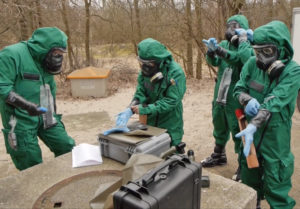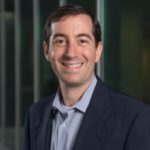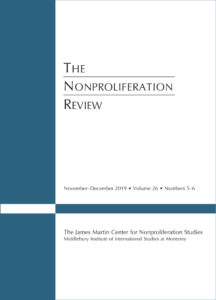April 7, 2022
Sanaa Alvira

OPCW inspectors participate in a chemical weapons field exercise. (Src: opcw.org)
American officials have recently warned the world that Russian President Vladimir Putin may order the use of chemical weapons in Ukraine, and warned Moscow against using either chemical or biological weapons. In recent years, Russia’s chemical-weapons capabilities have come to light through the poisoning of defectors and opposition figures with different types of “Novichok” or “A-series” nerve agents, which were developed in the Soviet Union during the Cold War.
What’s more, Russia may not be the only country interested in these exotic poisons. But the international regimes that prohibit these chemical weapons and restrict trade in the precursor chemicals used in their manufacture are struggling to keep pace with these revelations.
Covering all the branches

Stefano Costanzi
In new work in the Nonproliferation Review, Stefano Costanzi of American University and Gregory D. Koblentz of George Mason University explain the uneven coverage that Novichok agents and their precursors have received from the international chemical-weapons nonproliferation regime.
After the poisoning of Sergei and Yulia Skripal in the United Kingdom in 2018, the Organisation for the Prohibition of Chemical Weapons added several Novichok agents to Schedule 1 of the 1993 Chemical Weapons Convention (CWC), which lists toxic chemicals for purposes of verification. The Australia Group (AG), which harmonizes export controls across 42 countries, also took action, adding items to its list of precursors.

Gregory Koblentz
But in 2020, Alexey Navalny was poisoned in Russia with a different A-series agent, one still not captured in the updated control lists. The post-Skripal changes to the lists focused on Novichok agents that contain one type of chemical branch (amidine), while Navalny was apparently poisoned with an agent featuring a different chemical branch (guanidine). As toxic chemicals without any legitimate use, all types of Novichok agents are already prohibited under the CWC. But expanding the schedules to cover both branches will facilitate treaty verification and export controls.
All in the family
To bring both the CWC and AG regimes up to speed, the authors recommend not simply adding a single overlooked nerve agent and its precursors to their lists, but propose a “family-based” approach that also captures a number of potential variations called analog chemicals. Analogs to the documented A-series agents might still be secret, or might be created in the future.
Successfully implementing a family-based approach probably will take more than fleshing out the existing control lists. To make it practical for non-chemists on the front lines of industry and export controls to determine which chemicals are controlled under this approach, they call for the creation of a new tool based on cheminformatics, where detailed chemical data meets information technology. This tool would include a comprehensive database of controlled chemical families, with an easy-to-use interface that even non-chemists can use to submit queries. No single tool that can play this role exists today.
As concerns about potential events in Ukraine suggest, we are still far from the CWC’s goal of “excluding completely the possibility of the use of chemical weapons,” but updating lists of controlled chemicals and leveraging new technologies for nonproliferation can bring us a few steps closer.
Read this NPR article (Temporary open access)
About our journal
The Nonproliferation Review is a refereed journal concerned with the causes, consequences, and control of the spread of nuclear, radiological, chemical, and biological weapons. The Review features theoretical analyses, historical studies, viewpoints, and book reviews on such issues as state-run weapons programs, treaties and export controls, safeguards, verification and compliance, disarmament, terrorism, and the economic and environmental effects of weapons proliferation.
The Nonproliferation Review is produced at the Washington, DC offices of the James Martin Center for Nonproliferation Studies, Middlebury Institute of International Studies at Monterey. The journal is published by Taylor & Francis.

